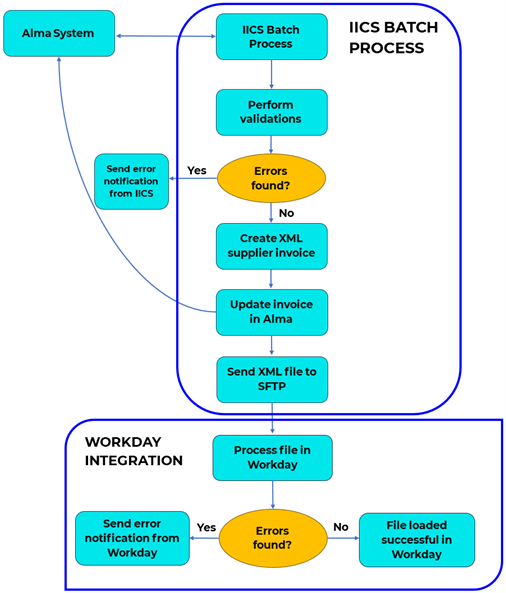Over the past few years, the Administrative Transformation Program (ATP) Integrations Team has worked with partners at every Universities of Wisconsin university to identify more than 2,000 ancillary systems that will be affected by the Workday implementation. Based on each system’s assigned system disposition, plans have been developed to prepare these systems for Workday go-live in July 2025, with a goal of minimizing disruption to existing business processes and flows with the transition to the new enterprise resource planning (ERP) system.
The primary way ancillary systems will be prepared for the Workday transition is through updated integrations, which allow for a seamless exchange of data between the ancillary system and Workday. The ATP Integrations Team partners closely with ancillary system teams, ATP functional teams (Human Resources, Finance, Research Administration), Integration Hub development teams (Application Programming Interface [API] and Informatica Intelligent Cloud Services [IICS] teams) to identify and develop the path forward.
Understanding Cross-Functional Integrations with Alma
To illustrate what a cross-functional integration looks like, we’ll look at a use case based on UW–Madison’s instance of Alma (dispositioned to be kept when Workday goes live), a cloud-based library services system designed to efficiently manage library operations.
Current State
Today, Alma integrates with Hermes (dispositioned to be replaced by Workday), an ancillary system that handles approval workflows and pre-processing of data sent to the Shared Financial System (SFS). Alma facilitates processes like access management, provisioning, and HR needs. The integration pattern presented in this article was approved for the Hermes replacement, handling supplier invoices for automated clearing house payments. (Note: There are separate instances of Alma across the UWs, but they don’t use an intermediate system like Hermes to load data to SFS.)
The current state workflow is illustrated in Figure 1. The elements in bold (i.e., UWMSN Alma instance and Alma API Developer portal) will continue to be a part of the future solution with Workday, while the remaining elements will be replaced by IICS and Workday. In the current state, Alma data related to supplier invoices is sent to Hermes via the Alma API developer portal, where it’s filtered based on specific criteria. From there, Hermes builds a file of payment vouchers in Extensible Markup Language (XML) before sending the data to be processed in SFS.

Future State
In the future state, Hermes will be replaced with an integration solution that is a combination of an IICS batch process and a custom Workday integration. The approval workflows done within Hermes today will be replaced by Workday’s business processes. This integration workflow was developed in collaboration between system stakeholders (UW–Madison Libraries), ERP Integrations IICS, ATP Finance, and ATP Integrations.
In the future state, a high-level overview of the process is described below:
- An IICS process sends a request to the Alma API for outstanding invoice data.
- IICS Mapping calls the Finance API to validate FDM, Supplier ID, etc.
- If errors are identified, an email error notification is sent.
- “Submit A/P Supplier Invoice” file is created in XML format.
- Calls Alma API to send invoice status update (Paid).
- Sends XML file to Secure File Transfer Protocol (SFTP) server.
- Invoice data file is processed in Workday.
- Email error notification is sent if there is an error.
Figure 2 illustrates the integration process-by-process.

A few highlights from the cross-functional collaboration that made this integration possible include:
- Intensive collaboration on scope and requirements elicitation
- Collaboration between IICS and ATP Integrations for integration solutioning
- Generation of future state recommendation by ATP Integrations with input from ATP Finance
- Implementation of the integration solution
- Support of end-to-end testing with ATP Integrations’ ancillary system business analysts
This integration is currently in the end-to-end testing phase, but the integrations work on other ancillary systems is ongoing and will continue through Workday go-live.
So much complex cross-functional work has already taken place, and there are plans for the remaining systems. If you have any questions about integrations work or your ancillary system, please contact the Integrations Team via the ATP Integrations Contact Form.
